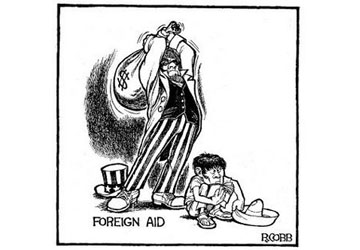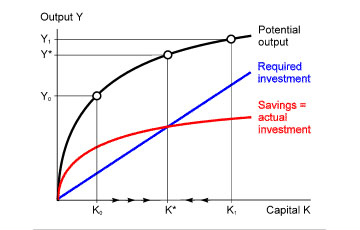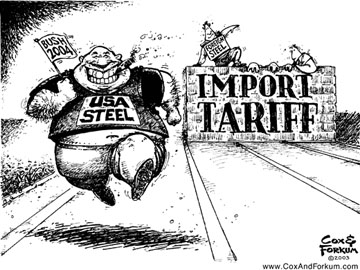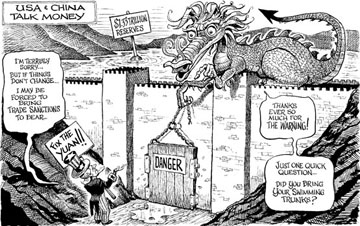1. Introduction to Development Economics

Might as well set the tone early
Source: Sustainable Development for All
Different from economic growth, traditional/socialist economics, political economy;
Less Developed Countries (LDCs) have overriding political/social concerns, larger government role, influnced by more developed countries. GDP
oversimplistic measure, neglected values, attitudes, history, culture, religion. Sen:
Functionings as possible personal deeds with own commodities/characteristics,
capabilities as freedom in functioning choice.
Three core values of sustenance, self-esteem and freedom from servitude, three objectives of availability of sustenance, general level of living, diversity in economic and social choice. Achieved through economic, social, political and non-governmental institutions. Problems include poverty trap, imbalanced development, and both reductionist and expansionist tendencies.
2. Development Theories and Developing Countries

Industrial To Service Economy Transformation Illustrated
Source: 2dayblog.com
50s:
Harrod-Domar/AK/(Linear) Stages based on
Rostow's Stages of Growth - more investment leads to more growth - change in national income equals savings ratio divided by capital-output ratio. 60s-70s:
Structural Change (Transformation) Models, recognizing investment as
necessary but insufficient condition.
Lewis Theory assumes fully elastic rural labour supply, surplus labour absorbed with uniform higher urban wages, expanding urban demand. But disregards labour-saving technology, low surplus rural labour, fixed urban wages and increasing returns in reality.
Patterns of Development further asserts concurrent structural changes and international integration needed, though casuality assumed.
International Dependence asserts unfair advantages by developed countries, false paradigm and dualistic development, but countered by success stories. 80s:
Neoclassical Counterrevolution: Market Fundamentalism - public choice theory argues for minimal government intervention, market-friendly acknowledges imperfections in LDC markets.
Solow adds to Harrod-Domar by
adding labor and technology (long-term growth determinant), predicts capital flows to low capital-labor ratio countries.
Romer further builds on Solow by stating
increasing returns at economy-wide levels as firms' knowledge is a public good. However unrealistic sector structure assumptions, poor infrastructure and empirical studies are weaknesses.
3. Contemporary Development Models

This is a control image. It is not supposed to be funny.
Source: eur macroeconomics site
Classical theories have
no intrinsic that explains long-term growth, neither neoclassical models shocks/technology, nor Solow its residual. Require explanation for
endogenous growth, removed requirement for diminishing returns, seek to explain low investment in LDC despite potential. 90s: Emphasized
complementaries that create
positive feedback on actions taken, thus
technology actually endogenous. Optimal results require public policy for
coordination, avoids coordination failure eg. stagnation at bad equilibrium.
Big Push to kickstart improvements, even in normative aspects (e.g. corruption, punctuality).
Forward and backward linkages increase returns to scale.
Kramer's O-Ring theory posits critical quality bottlenecks at weakest links, thus
task complementarity and
assortative matching and more than proportionate wages with increasing competency. Non-existent capital markets and indivisible (qualification-based) human capital investment also factors.
4. Case Studies on Principles & Concepts

But everybody knows the underlying pillar of the Korean economy is Starcraft
Source: I can has freedoms?
South Korea: 15% investment ratio in 1965 to 37% by 1990 ("take off") and still 28% in 2000s,
corresponds with Rostow/H-D predictions, though through exports.
Agricultural productivity increased firstly due to
political land reforms in late 40s,
integrated rural development in 70s, through
interventionist government also inducing company behaviour through tax policies, export targeting, licensing agreements and monopolies. Colonised by Japan until 1945 and heavy dependence on US since
refutes dependence theory. Financial sector only opened after 1997 Crisis.
Argentina: Failed Take-Off, reliance on primary good export, manufacturing failed. Inefficient state enterprises and cronyism.
China: Gradual, systematic reforms. 80s:
Rural/township enterprises (part private), weaned from central planning (
"dual track" - also for financial reforms). Early reforms favored agriculture, productivity boost as benefits privatised, other industries followed. 1978-2004: 9% annual growth, FDI attracted by large domestic market (increasing by
agglomeration effect), even as early industralisation for domestic market. Hong Kong and
Special Economic Zones provided funds/ideas. Though relatively more successful than Russia, social problems and restricted freedoms exist, and methods may not be duplicated by many other LDCs without China's unique characteristics.
5. Population Issues

The Final Solution
Source: Adfreak
Only 300% growth from AD1 to AD1750 (250 to 728 million), but trebled again in 200 years (till 1950), nearly trebled yet again in another 50 years (to 6.1 billion). Due to
medical, sanitation, transport and communication advances.
Urban growth also due to
rural-urban migration, life expectancy differential between LDCs and MDCs fell from 27 years to 16 years in past 50 years, unavoidable short-to-medium-term population increase,
demographic transition (
hidden momentum). LDCs still have high birth rates, children seen as
economic goods. However population growth per se arguably not the problem as consumption far higher in MDCs, many regions still underpopulated. To manage urban growth: recognize policy bias, hub-spoke transportation model, hierarchy model, first city bias (black-hole effect, dictatorship/corruption symptom), industrial clustering. Importance of
informal (independent) sector, which is interwoven with formal sector, has advantages of low capital intensity, cheap training, appropriate technology, recycling and poverty alleviation, but aggravates migration, pollution and congestion. Women have unexpressed potential, especially in micro-enterprises. Migration is
both a cause and effect of underdevelopment, and based mainly on expected wages, thus urban job creation alone ineffective, instead expand rural-oriented education and training, expand rural economic base, small scale/labor intensive industries.
6. Agriculture

Spaghetti yields boosted by the Green Revolution
Source: The Magic Robot
Over half the world population lives in agricultural areas (over 3/4 in Africa), and over a third are engaged in agricultural activity. However
over 800 million may not have sufficient nutrition. Lewis model places agriculture in
passive/supportive role, providing low-cost food and labor for industry, but more pro-active agriculture now required. Agricultural output grown 2.5 times from 1980 to 2000 in East Asia, but only 50% in Sub-Saharan Africa, where slash and burn renders land unproductive but farmers cannot afford fertilisers. Agricultural neglect contributes to urban migration.
Technology behind MDC agricultural productivity, cheap export ability threatens LDC farmers. Large latifundio present in Latin America (1% own 70% of land), feudal patron-client relationships, generally fragmented farms in overpopulated Asia. Private ownership removes patronage obligations.
Sharecropping diminishes incentives, landowners hold too much power, private ownership optimal. Subsistence agriculture risky, uncertain, as is solely cash crops,
mixed/diversified superior. Eventual development into commercial/specialised farming "industry", but generates rural unemployment, excludes women, social institutions needed to introduce scale-neutral measures, training (e.g. seeds, crop rotation), prices should be set to benefit farmers.
Land reform crucial but often blocked politically by rich landowners. Supportive policies/general rural development required.
7. The Role of Government

Say what you want about socialists, their graphics designers sure know how to work with limited colours
Source: Allposters.com
National Development Plans prevalent in LDS up to 70s (e.g. Singapore's Economic Planning Unit, 1963-67) - control private economic activity to fulfil social objectives. Began with Marx's Das Kapital (1857), implemented in USSR (1917). Appropriate when
market non-existent/fails, or
socially undesirable. Aggregate growth (e.g. H-D) models
concentrate resources in government, Interindustry/input-output models based on 10-30 sectors, Computable general equilibrium/project appraisal models try to predict reactions, justify costs. Used to
fix externalities, possibly macro (e.g. inflation, currency values). However often
insufficient data, overambitious plans, poor execution, rigidity.
Washington Consensus (1980s): free market approach by IMF, IBRD (World Bank), US agencies, liberialisation, foreign investment.
Santiago Consensus (1998): Focus on poverty alleviation, but still market-based. Require public/private sector balance, recognition of wealth distribution. Problem of
diffuse gainers outvoting concentrated losers, institutional reform to take long-term view, emergence of effective institutions. Possible misuse of autocratic power despite stimulating growth, corruption to be tackled with better pay, competition, deregulation, transparency, judicial independence.
Vigorous citizen sector (NGOs) very important, especially as some activities best with part-market, part-authority structure.
8. Case Studies on Rural-Urban Migration

In search of the Great Less Developed Country Dream
Source: Free Republic
About half the world lives in cities, but will be 2/3 by 2025,
most migration (and megacities) in LDCs, accounts for half of urban growth. Unemployment/underemployment generated,
may not be stopped by employment opportunities, creates social costs. Informal sector attracts rural migrants (do not view as underemployment), no wage pressure on formal sector, more intersector movement by contacts desirable (now 5-10%). Probabilistic theory/Todaro Migration Model (1969) says
most migration is economical cost-benefit decision (perhaps diversification or purely survival), though families tend to move together. Stemming migration: increase human capital of women, design rural technology/agricultural extension programmes/credit schemes for women.
Education also breaks poverty cycle. Botswana: migration proportional to rural-urban wage differential. Kenya: Training & Visit system (1983) - Gatekeeper training approach, progressively advanced training, women guard natural resources. Bangladesh: BRAC, largest NGO in world, non-formal primary education (short school hours, little homework, 90% continue into formal schooling), 115k Village Organizations (35-50 women each), now mostly self-supporting; gone international in Afghanistan.
Microfinance by Grameen Bank.
9. Trade Theory & Development Experience

To provide direction is a heavy responsibility
Source: Answers.com
Many interpretations of
globalization, economically refers to
international trade and financial flows, often uneven.
Upside and downside greatest for LDCs. Poor possibly bypassed by trade.
Waves of globalization - Colonialism (within empire), 1840-1914 (between empires), after 1950 (after empires).
Protectionism led to Great Depression, GATT (1948), WTO (1995) - but formed by (biased towards?) MDCs, many keep trade barriers when it suits them. LDCs
export cheap primary goods (prices generally declining as substitutes found),
import expensive products, leads to
trade imbalances despite implication of comparative advantage/specialization/equalization in traditional theory.
Code of conducts by MNCs and IP protection by LDCs needed. Many LDCs vulnerable due to
single export good, usually
low income elasticity of demand for it, stagnant income.
Prebisch-Singer Thesis: export prices fall over time due to low income/price elasticities (0.6%/year since 1900), so revenue maintained only if volume increases. Neoclassical free trade (200 years old) inapplicable in dynamic modern world, fixed resources, factor homogeneity & immobility, full employment (diminishes technological generative influence), open technology, non-intervention poor assumptions. Stagnation from unskilled manufacturing. LDCs can do
import substitution, find
niches, avoid rigidities, import controls, poor infrastructure, lack of managerial talent, collective bargaining.
10. Export Promotion & Import Substitution

Bush and the United States - A Bastion of Free Trade
Source: Cox & Forkum
Trade possibilities -
exports (mostly 1970s on) or
import substitution (1950s-60s). Commodity export prices (even oil) fallen, discriminatory US/EU policy
subsidizes local production, exports, suppresses LDC production. International
commodity quotas often failed/ignored.
Supply side rigidities from risk averse farmers, agricultural marketing boards setting low prices. Need
international cooperation, LDCs upgrade rural economic/social structures and export, MDCs provide market access and create agreements. Manufacturing share of low-medium income countries grown to 25%, especially in China, but
low income only 3.3%; However 20 of 24 MDCs increased protection during 1980s. Multi-fibre arrangement (MFA, up to 2005) of bilateral quotas caused US$24 billion of lost textile export earnings, implicit barriers from lobbists, "anti-dumping" laws (esp by US). LDCs thus can try import substitution,
protect infant industries, but possible complacency, capital-intensive catering to rich, artificially
overvalued exchange rates (often corrected by forced devaluation, wage-price spiral), entrenched protection, linkages not developed as intermediate goods industries less protected, do not develop. Effective protection by MDCs on manufacturing processes may kill LDC development. Success of Newly Industrialised Countries (NICs) more on industrial policies and less on whether IS/EP.
South-south trade reduces instability, regional trading blocs (e.g. ASEAN) to be encouraged.
11. Developing Country Debt

Doesn't like conditions on his loans either
Source: Egyphoto
Import surplus is
foreign capital, may be from using foreign reserves, FDI/loans/aid, remittances. If unbalanced, leads to
exchange rate depreciation, floating rates since 1971. Fixed rates means tied to major currency monetary policy. Before 70s, external debt of LDCs relatively low, mainly to governments/international financial institutions. However since then
commercial bank (hard) loans increased as LDCs did not like IBRD/IMF (soft loan)
conditions, fuelled growth but 1974/79 oil shocks created debt/interest burden in foreign currency, increased from US$68 billion to over US$2 trillion. Exchange rates fell, causing
capital flight,
interest servicing burden, causes monetary transfer of resources from LDCs to MDCs when it was the other way round. Aggravated by global recessions, exchange rate overvaluation (caused Asian crisis of 1996). IMF helped but required liberalisation of forex, import controls, devaluation, anti-inflation programs, openess to FDI, often
domestically unpopular, and IMF influence small compared to private capital flows (outdated since 1930s formation). IMF strategy
stabilized Latin American/Caribbean economies, but led to
long-term developmental crises. IBRD is more long-term, but has too diverse scope and limited resources. Net result of
weakened state sovereignty, financial instability, South-North migration, needs some
debt forgiveness.
12. International & Macro Case Studies

Till one day, the boot's on the other foot...
Source: RGE monitor
Taiwan: 7% annual growth from 1960 to 2000, universal basic eduction, life expectancy of 75 years, nearly
no absolute poverty, low income inequality. Due to Chinese heritage of education,
US model of general education,
Japanese model of vocational education, high female enrolment.
Equitable land reform with peasants gaining land ownership and
landlords compensated with SOE shares (new ROC government had no political obligation), infrastructure built by Japanese for rice. Built industry on
domestic basis for later export through import licensing, favoured industries kept in check by threat of allowing imports, also naturally high savings rate.
South Korea: Highest tertiary education in world, sophisticated products backed by financial incentives, national companies (
chaebols), export targets enforced (especially before imports allowed), moral suasion effective, licensed technology, selective investment.
Mexico: 1982 debt crisis as debt servicing suspended, bad borrowing during oil shocks of 70s.
1985 Baker Plan - market reforms for fresh borrowing, but banks refused to cooperate so debt swapped for stake in Mexican industries, exchanged old debt for Aztec bonds (bought time).
Brady Plan used floating rate bonds backed by US Treasury, managed to retire bonds in 2003 (reduced debt from 63% to 23% of GDP in 20 years)
I could send the remaining few hours pecking out a longer post, or I could browse through the textbook a bit more. An easy choice to make - I'll be creating a new MSN emoticon.....glys.com/favicon.ico'/bert's blogOpen Bookame1 day agoinput type='hidden' value='http://w...








